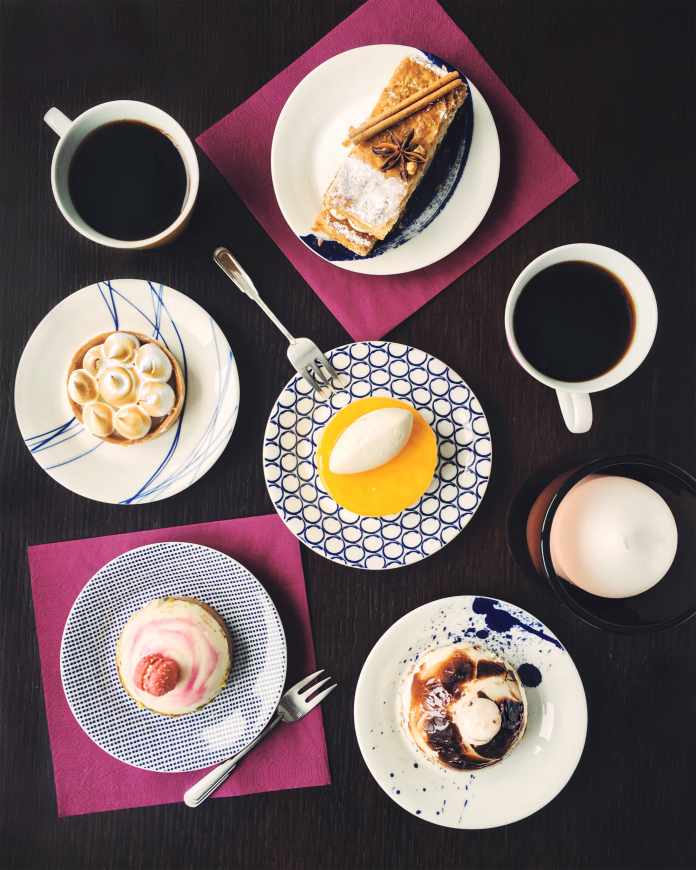
A perfect pastry is what we all crave for. If this is what you are looking for then you have come to the right place. Different types of loose tea from an online tea and coffee shop could go well with pastries. However, before we go into details on different mouth-watering pastries to pair with tea, let us take a look at the various types of tea that can go well with pastries:
- Golden Nepal black tea
- Nepal Himshikhar black tea organic
- Organic Darjeeling tea Risheehat
- Organic Chun Mee Green tea
- Organic Yunnan Black tea
- Organic Keemun tea
- Hemp herbal tea blend
- Organic hemp tea blend
- Kenya leaf tea
These are just but a few examples of the different types of beverages that can work out well for your tea and pastry combination. Most types of the beverage come in organic form, for health purposes. These organic teas mostly come in the form of loose leaf tea, but you can also get tea in form of tea bags if that is what your desire is.
5 Types of Pastries to Pair with Tea
All pastries are doughs made from fat, flour and water. Let us take a dive into the world of pastries and get to know the art of making great pastries and the history of pastry dough.
1. Puff pastry
It is known as the king of pastries because of its remarkable rise and perfect structure. It is made from layers of dough and butter which are rolled together then overlapped. Air is trapped between the layers which expands as the dough bakes. This causes the pastry to rise, creating gaps that result in the airy, flaky puff texture of the pastry. Therefore, they are incredible pastries to pair with tea.
The delicate structure of the puff pastry makes it to work best as a pie topping. You can create a traditional croissant from this type of pie by adding yeast and milk to the recipe.
2. Shortcrust pastry
This is among the common pastries that are easy to prepare. Its ingredients are butter, flour and enough water that will be used for binding. Once mixed, the ingredients are kneaded for a few minutes, refrigerated then rolled to line the bottoms and tops of pies.
The shortcrust pastry is bulkier than the puff pastry. Its texture is crumbly rather than flaky. This texture allows it to stand up to both wet and dry fillings.
3. Phyllo pastry
If you or your customers love the sweet taste of baklava creations such as spanakopita which is a pie made from layers of dough made from spinach and cheese filling, then you will need to master the art of making the phyllo pastry. Its ingredients are flour, water, salt and some oil. The dough is a bit different from both puff and shortcrust because of its low-fat levels.
This leads to thin, flaky layers that can tear easily when not handled well. Most people prefer the phyllo pastry since it can be easily folded, and rolled into any shape. It’s always used with dry fillings. Basically, you can wrap layers of the phyllo dough around your filling then smear with some butter before you bake it. Phyllo dough dries fast so it will be best if you work with speed to ensure it does not lose its moist nature.
4. Rough puff pastry
5. Choux pastry
This pastry is made from flour, butter and water and some eggs for extra leavening. This type of pastry is known for being filled with piped creams by use of pastry bags to come up with awesome desserts such as the cream puffs. If the puffs are not properly cooked, they will collapse and lose their structure when being removed from the oven. Puffs will always go well with any beverage that you love.
6. Hot water crust pastry
Making hot water crust pastry requires butter melted in a high concentration of boiled water. This will result in a pastry that is easy to shape. This pie is great for making meat pies and other dishes that will need a crust that can hold dense ingredients.
Tips of pastry making
- Always invest in the best, equip yourself with the latest pastry equipment.
- While baking, leave enough space between the items to allow them to spread and rise evenly.
- Learn the correct temperature and time required to come up with a perfect pastry dough.
- Consider storing pastry dough at room temperature in an air-tight container for several days. You can also freeze the dough in a sealed bag for up to one month.
- If you wish to bring back to life the frozen pastry dough, place it on a flat tray and heat it in an oven for at least 5 minutes.
- Once you succeed making your first pastry, keep practicing to perfect it.
In a Nutshell
Be sure to check out more pastry recipes and how you can play around with some of the best assorted ingredients. Tea and pastry blend well with each other and you can expand your list of favorite tea by learning about more on how to make excellent tasting beverages.
